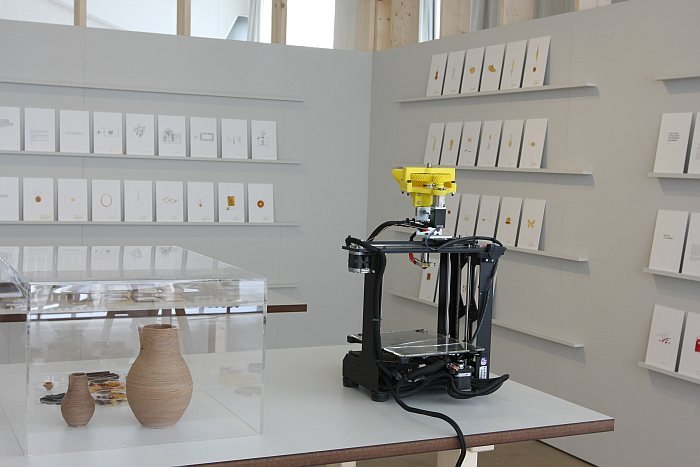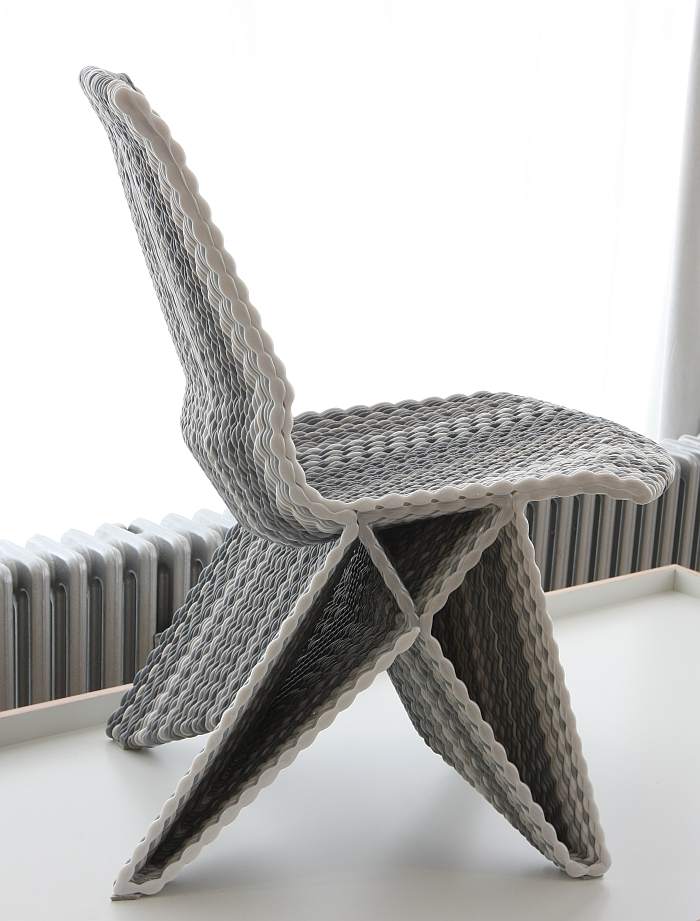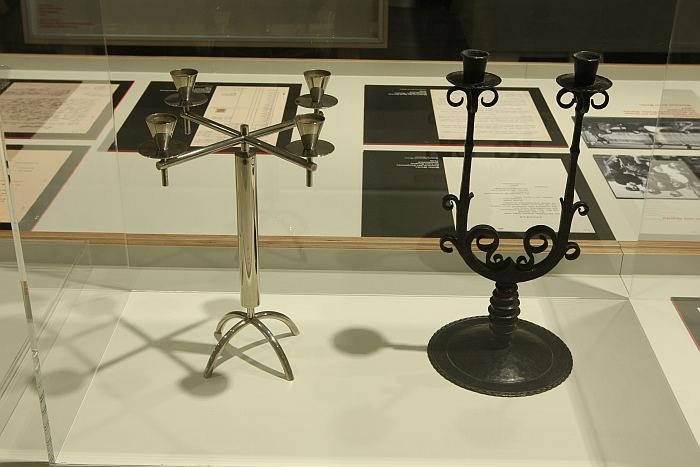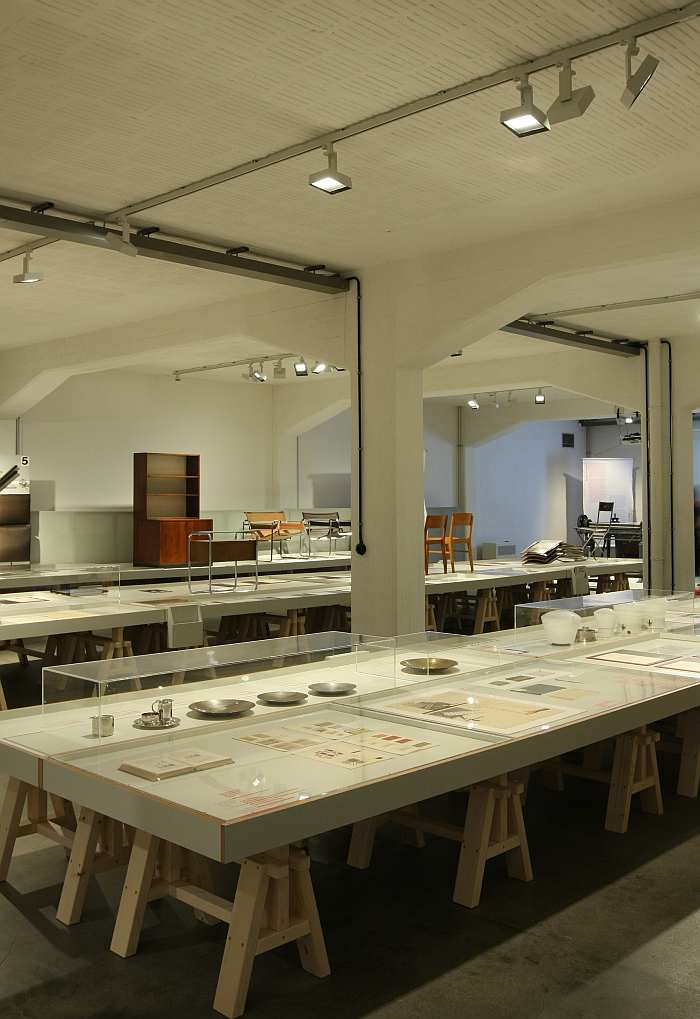"The handicraft training in the Bauhaus workshops was not an end in itself, but an irreplaceable educational tool. The aim of this training was to create designers who, thanks to their precise knowledge of materials and processes, were able to influence the industrial production of our time." Walter Gropius, 1955*
The tensions caused by the practical question of how this influence was to be expressed, and the parallels with the industrial production of our time, are explored in the exhibition Craft becomes Modern. The Bauhaus in the Making at Bauhaus Dessau.
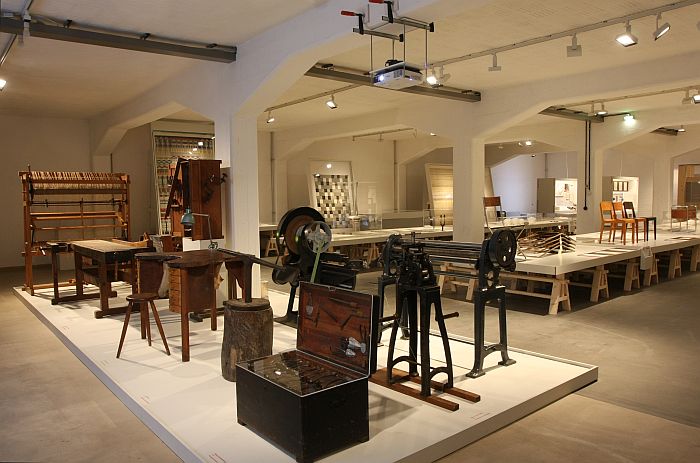
As we all know, Bauhaus Weimar was a craft, applied arts institution, while at Dessau craft was abandoned and industrial production wholeheartedly embraced.
Which is exactly the view of Bauhaus Craft becomes Modern seeks to reform.
"There was already in Weimar a change of direction, something Walter Gropius announced with the staging of the 1923 Weimar exhibition under the slogan "Art and Technology – A New Unity"", explains curator Dr. Regina Bittner, "and one must also remember that from the very beginning one of the intentions of the Bauhaus was the development of standardised prototypes for industry"
That such didn’t happen immediately lying in part in the realities of post war Germany, and the negative experiences many people had had with the, then fledgling, industrial production.
However with the, albeit enforced, move to Dessau, Bauhaus had not only the space in a purpose built building to advance their industrial manifesto, but also the benefit of the support of a progressive, innovative local industry and an equally progressive, open, avant-garde society.
"Despite that", continues Dr. Bittner, "craft remained the basis of the education at Bauhaus Dessau, and our interest is the how debates and discussions about the role of and relationships between craft and industry developed here in Dessau"
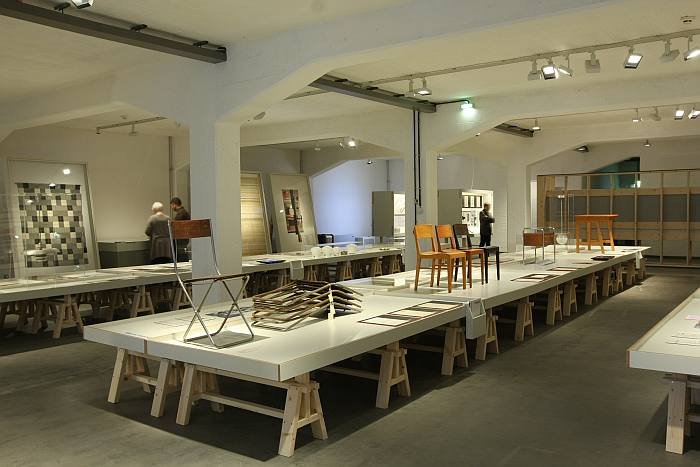
There is a very nice double meaning in the title Craft becomes Modern: modern as in modernism - so the shift which Bauhaus helped promote away from craft based production methods to industrial production methods - and also modern as in contemporary, as in those designers today who are (re)turning to craft based ideals and thinking, when not necessarily traditional craft processes and materials. Craft became modern and craft has become modern.
The larger part of Craft becomes Modern is devoted to the former, the exhibition opens however with the later and an exploration of contemporary "industrial craft", and the parallels with the situation at Bauhaus
Which sounds counter-intuitive. Starting as it were at the end. But works. Largely because it familiarises the visitor with the idea of craft production versus industrial production, the question of what is craft, what is industrial, the pros and cons inherent in both terms, is the unique better? The standardised? The unique standardised? And thus, as it were, lays the foundation for what is to come.
Even if the bright colours and gaily illuminated, airy space don't exactly prepare one for the dimmed lighting and restriction of the main exhibition space.
But we'll get to that later.
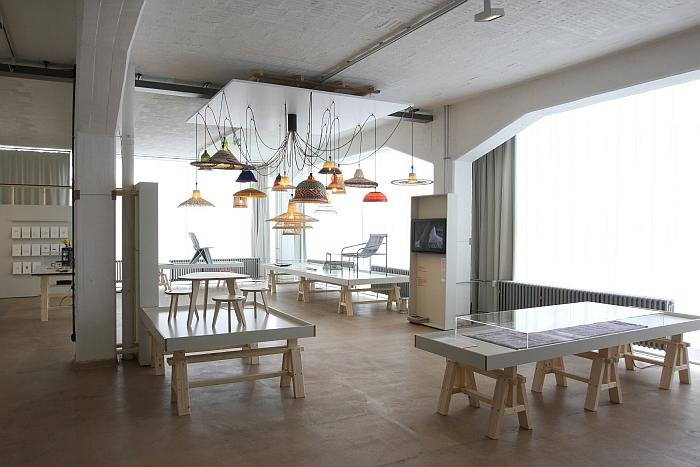
Curated by Renée Padt of Stockholm based platform Editions in Craft, the opening section of Craft becomes Modern is titled Craft at a crossroads and features works by designers such as, and amongst many others, Natsai Audrey Chieza, Dirk Vander Kooij, or the London based collective Assemble, and according to Renée Padt began with the historic section of the exhibition and considerations as to how she could, in effect, build a 90 year long bridge and thus create a dialogue between the discussions in the Dessau workshops and contemporary discussions, investigate parallels and divergences.
And something she has achieved very pleasingly with a nice mix of illustrative, thought provoking, and at times, challenging projects, which nicely sum up the myriad of "new craft" projects and experimentation currently being practised.
Viewing Craft at a crossroads a comparison between Craft becomes Modern and the Vitra Design Museum's exhibition The Bauhaus #itsalldesign, is unavoidable; only really stands up however in that they both look at parallels between "then" and "now", be that in terms of approach, materials, technology or the social, cultural and economic realities underscoring the works. The curatorial approaches are however very different, and equally valid. Not least because on leaving Craft at a crossroads one is made very clear that the focus of Craft becomes Modern is very much the Dessau workshops and not the wider Bauhaus context: arriving in the main part of the exhibition you are greeted by a presentation of original tools and machines from the workshops at Bauhaus Dessau, including looms, silversmith benches and various metal presses.
According to the exhibition organisers Craft becomes Modern represents the first time such objects have been displayed. If we're honest, and we always try to be, on the way to Dessau our response to that claim was very much of the "and?" school of snotty belligerence. Having however viewed the exhibition the decision makes perfect sense, very nicely setting as it does the scene for the coming debate. Not least because the objects neatly illustrate that the gap between "craft" and "factory" production was relatively small, the differentiation marginal, and the debate therefore between the two much more fundamental. Was less about how you did what you did, but why.
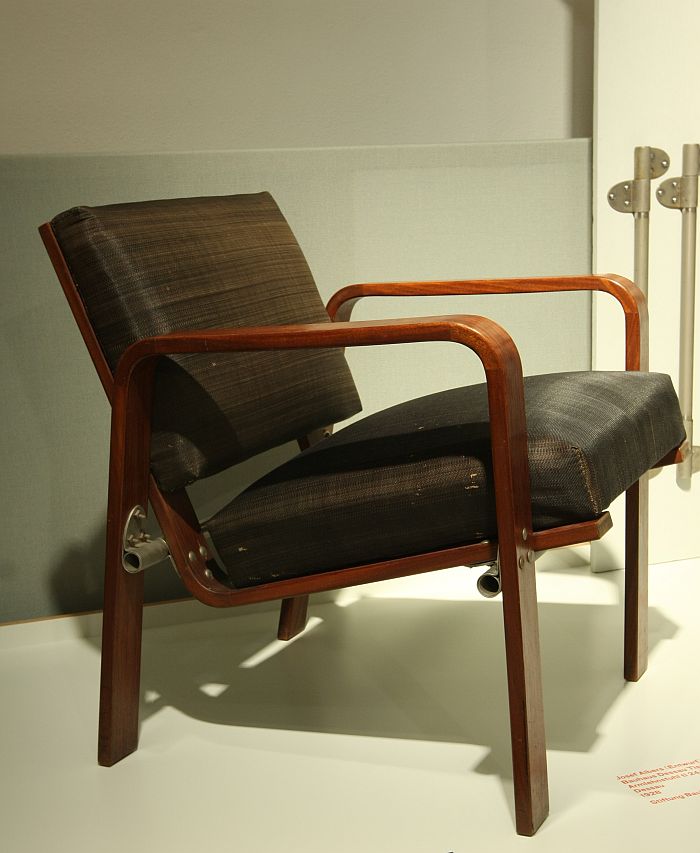
The historic part of Craft becomes Modern presents objects, documents and photographs from the carpentry, metalwork and weaving workshops at Dessau which set out to explore how each was involved in the discourse and debate at Dessau, how the discussions between proponents of craft and those of industry were undertaken and where it led. The "how" isn't necessarily always immediately apparent, but then being as it is an exhibition devoted to debate and discourse, it isn't an exhibition that can be directly presented in objects. The presented objects can only exemplify. Which they do very well. But as an exhibition it leaves you to do an awful lot of the work yourself. It's up to you to read the texts, make connections, follow lines, understand the reason for disputes over roles in the design process or type of machine to be used at which stage. We know, we know, no-one today is able to concentrate on any one subject longer than the length of time it takes to hit "Like".
But try.
Yes, you could just purely view Craft becomes Modern as a comparison between "then" and "now".
But that is not the point.
And yes, one could just purely enjoy the presented objects, of which there are some real gems. Among the highlights for us is without question the so-called ti 244 armchair by Josef Albers, a truly delightful piece of rational design, reducing the chair down to a minimum number of base, standardised components. Formally it has lost something over the decades, but as a construction and production principle, is as modern, and modern, as ever.
Elsewhere the exhibition presents a delightful demountable desk by Wera Meyer-Waldeck & Josef Pohl from 1929, an intriguing side chair project by Martin Decker from 1928 and a very interesting 1930s pendent lamp design by Alfred Schäfter.
But that is not the point.
The point is understanding the tension between craft and industry at Bauhaus Dessau. Understanding the importance of both, the interplay, and the role that played in helping industrial production develop, as expressed, for example by the contract between the metal workshop at Bauhaus Dessau and the Leipzig based lighting manuacturer Kandem which saw the likes of Marianne Brandt, Hin Bredendieck and Heinrich-Siegfried Bormann develop, highly succesful, families of contemporary lighting.
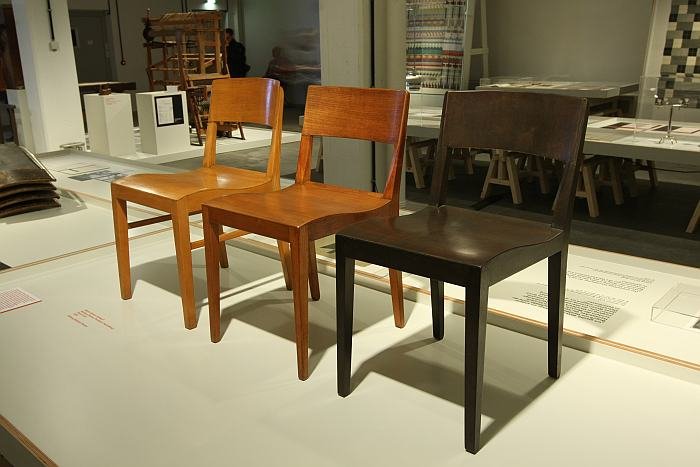
As ever with exhibitions at Bauhaus Dessau the principle problem is the space. Staged as it is in the former workshop wing of the Gropius building, it is in the original location, but a location that was designed as a workshop and not as exhibition space. If only those East German architects who reconstructed the wing post-War had shown a little more foresight! Bauhaus Dessau exhibitions rarely sparkle in the way exhibitions elsewhere can, and the presentation of Craft becomes Modern is a further example of that. Although interesting and informative, it doesn't, necessarily, inspire: which is no way a reflection on or criticism of the curators or exhibition architects, but the space. And something it is important to be aware of. The location can be as challenging as the content.
A second criticism of the exhibition is however in the organisers' control.
Before entering the historic part of the exhibition, before crossing as it were the 90 year bridge, one has the opportunity to build your own catalogue: individual pages are laid out, which you can assemble as you wish between cardboard covers. A very nice idea. But sadly only in German. All other texts are bi-lingual German/English, the catalogue pages only in German. Which does deduct somewhat from the effect of the exhibition for non-German speakers. Not fatally. Just somewhat. And is a bit confusing given Dessau's international relevance and appeal.
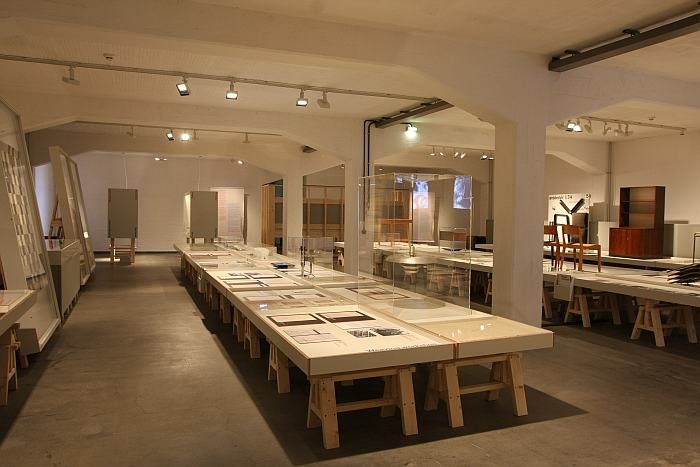
As we've oft noted in these pages, and will never tire of noting, even when no longer relevant, as Bauhaus approaches the 100th anniversary of the founding of Bauhaus Weimar, it is important that we all, finally, move away from the idea of "Bauhaus" as a style: there was no Bauhaus Chair, Bauhaus Lamp, Bauhaus Table, Bauhaus Trouser Press, Bauhaus Haus. There was however a Bauhaus Ideal, a Bauhaus Concept, a Bauhaus Philosophy. Or perhaps better put, several ideals, concepts and philosophies, which evolved during the 14 years of Bauhaus's existence, and continue to evolve in our contemporary contexts. Something very pleasingly demonstrated in the course of Craft becomes Modern.
An important part of cementing such is understanding that Bauhaus wasn't the half dozen protagonists most of us can name, nor the 12 an expert can name, nor even the 24 you have to be able to name to be awarded a top post in a Bauhaus institution. But that Bauhaus is the sum of hundreds of parts. Craft becomes Modern celebrates that fact: the Breuers and Brandts are there, but so are the Deckers, Meyer-Waldecks and Schäfters.
Consequently Craft becomes Modern neatly reminds us that whereas Bauhaus became a legend in the exhibition halls of the MoMA New York, Bauhaus became relevant to questions of production, consumption, materials, formal aesthetics and resource responsibility, in the workshops of Dessau. And remains so because it did. The workshops of Dessau thus representing a good place to start reforming your understanding of Bauhaus.
Craft becomes Modern runs at Stiftung Bauhaus Dessau, Gropiusallee 38, 06846 Dessau-Roßlau until Sunday January 7th 2018.
1955Quoted in the Craft becomes Modern. The Bauhaus in the Making self-build catalogue.
Full details, including information on the accompanying fringe programme, can be found at www.bauhaus-dessau.de
